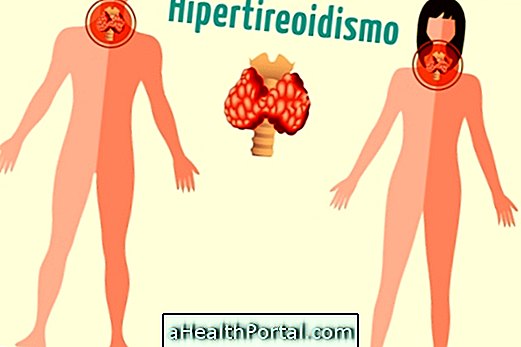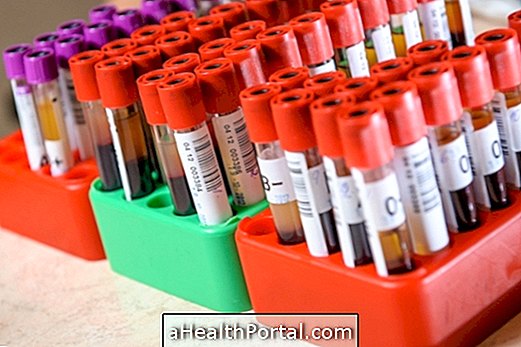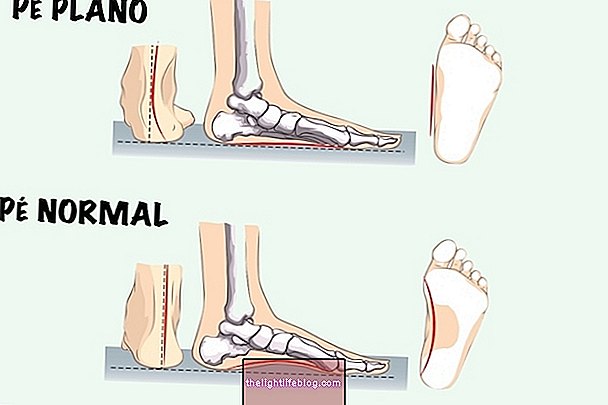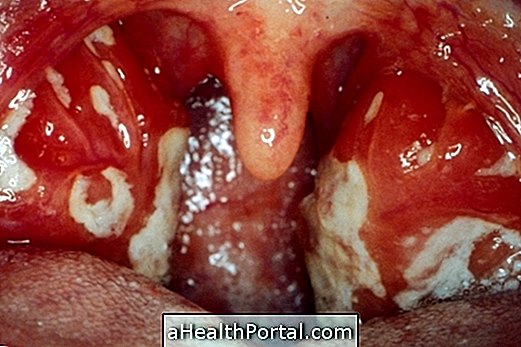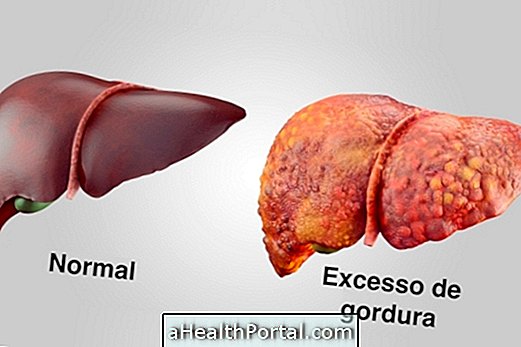The thyroid is a gland located in the front of the neck, which plays an extremely important role in helping to regulate the body's metabolism and balance, being related to the functioning of the heart, brain, liver and kidneys. In addition, the thyroid also influences growth, menstrual cycle, fertility, weight and emotional state.
These effects are possible because the thyroid secretes the hormones T3 and T4 in the bloodstream, being able to spread throughout the body. The thyroid is controlled by the pituitary gland, another gland located in the brain which in turn is controlled by a region of the brain called the hypothalamus, so changes in any of these regions can lead to diseases and thyroid related symptoms, which include hypothyroidism, hyperthyroidism, thyroiditis or thyroid cancer, for example.
Exams that may indicate changes in the thyroid are T3, T4 and TSH in the blood, as well as other dosages of antibodies, ultrasonography, scintigraphy or biopsy, which can be requested by the endocrinologist to investigate the reason for the changes. Learn more about thyroid-screening exams.

8 Common Thyroid Diseases
Thyroid malfunction can happen due to several diseases, and only the doctor's evaluation can differentiate them and confirm them, however, we mention some of the most common ones in the population. Learn how each of them manifests itself and its treatments.
1. Hyperthyroidism or Hypothyroidism
Hipo and hyperthyroidism are diseases caused by changes in the levels of hormones secreted by the thyroid, and may have congenital, autoimmune, inflammatory or secondary causes to other diseases or side effects of treatments, for example.
In general, in hyperthyroidism there is an increase in the production of T3 and T4 hormones and a decrease in TSH, whereas in hypothyroidism there is a decrease in T3 and T4 with elevation of TSH, however, there may be variations depending on the cause.
| Signs and Symptoms of Hyperthyroidism | Signs and Symptoms of Hypothyroidism |
| Increased heart rate or palpitations | Tiredness, weakness and indisposition |
| Nervousness, restlessness, restlessness | Slowly, physically and mentally |
| Insomnia or difficulty sleeping |
Difficulty concentrating and poor memory |
| Weight Loss | Body swelling, being overweight |
| Increased sensation of heat, reddened skin, pink face | Dry and rough skin |
| Emotional instability | Constipation |
| Diarrhea | Cold intolerance |
| Hot and damp skin | Sexual impotence |
| Goiter | Hair loss |
| Tremor in the body | cold sensation |
To learn more about the symptoms that indicate these diseases, check out symptoms that indicate thyroid problems.
2. Thyroiditis - Thyroid inflammation
Thyroiditis is inflammation of the thyroid, which can occur from a variety of causes including viral infections, such as coxsackievirus, adenovirus and mumps and measles virus, autoimmunity, or poisoning by certain medicines, such as amiodarone.
Thyroiditis may manifest acutely, subacute or chronic, and symptoms range from asymptomatic, even more severe conditions that cause thyroid pain, difficulty swallowing, fever or chills, for example, depending on the cause. Understand how thyroiditis and its major causes occur.
3. Hashimoto Thyroiditis
Hashimoto's thyroiditis is a form of chronic autoimmune thyroiditis, which causes inflammation, cell damage, and then damage to thyroid function, which may not secrete enough hormones into the bloodstream.
In this disease the thyroid tends to increase in size, provoking goiter, and the symptoms of hypothyroidism or alternating between periods of hyper and hypothyroidism may be present. It is an autoimmune disease that generates antibodies such as anti-thyroperoxidase (anti-TPO), anti-thyroglobulin (anti-Tg), anti-TSH receptor (anti-TSHr). See the treatment by clicking here.
4. Postpartum thyroiditis
Postpartum thyroiditis is one of the forms of autoimmune thyroiditis, affecting women up to 12 months after birth, and is more common in people with type 1 diabetes or other autoimmune diseases.
During pregnancy, the woman is exposed to the baby's tissues, and to prevent rejection, the immune system undergoes several changes and may increase the chances of developing autoimmune diseases. This change usually manifests with symptoms of hypothyroidism, but does not always need treatment because thyroid function can return to normal in 6 to 12 months.
5. Goiter
Goiter is enlargement of the thyroid. There may be a number of causes, including lack of iodine, inflammation of the thyroid due to autoimmune diseases or formation of thyroid nodules, and may cause symptoms such as tightness in the throat, difficulty swallowing, hoarseness, coughing and, in cases more difficult to breathe.
Its treatment varies depending on the cause, and may consist of iodine, medicines for hyper or hypothyroidism or, in cases of nodules and cysts, until thyroid surgery. Learn more about what goiter is, how to identify and treat.
6. Graves Disease
Graves 'disease is a form of hyperthyroidism due to autoimmune causes. In addition to the symptoms of hyperthyroidism, Graves' disease may have enlarged thyroids, salty eyes (receding eyelids), and hardened red plaques under the skin (myxedema).
Treatment is done by controlling thyroid hormone levels with medicines such as Propylthiouracil or Methimazole, for example, or with radioactive iodine. See more details on the symptoms and treatment of this disease here.
7. Thyroid nodule
The cause of the appearance of a cyst or lump in the thyroid is not always discovered. There are several types of nodules in the thyroid, and fortunately most of them are benign, and may appear through a lump in the front of the neck, which does not cause pain, but can be seen when the person swallows food, for example.
It can be identified through palpation, and from examinations such as ultrasound, tomography, and thyroid scintigraphy, and sometimes the doctor may ask for a biopsy to know its type and whether it is benign or malignant. Usually only nodule monitoring is done, except when the person has symptoms, when there is a risk of thyroid cancer or when the nodule changes appearance or grows more than 1 cm. See more details by clicking here.
8. Thyroid cancer
It is the malignant thyroid tumor, and when it is discovered one should perform tests, such as whole body scintigraphy, to see if other parts of the body have been affected. Treatment is done with removal of the thyroid through surgery, and there may be a need for other complementary therapies such as the use of radioactive iodine, for example. In cases of more severe and aggressive tumors one can also resort to radiotherapy. See 7 symptoms that may indicate thyroid cancer.
Also watch the following video and know what diet to do during thyroid cancer treatment:


